Japanese decor, a reflection of traditional Japanese culture and aesthetics, is an interior design style that captivates with its simplicity, minimalism, and deep connection to nature. This design philosophy has gained global recognition for its ability to create harmonious and tranquil spaces. In this article, we’ll delve into the key elements and principles of Japanese decor that make it so distinct and appealing.
Minimalism

A hallmark of Japanese decor is its minimalistic approach. It embodies clean, uncluttered spaces with a restrained use of furniture and decorative items. The Japanese concept of “ma” or negative space plays a crucial role, emphasizing that empty spaces are as vital as the filled ones. This approach instills a sense of tranquility and openness.
Natural Materials

Japanese decor is deeply rooted in the use of natural materials. Wood, bamboo, paper, and stone are commonly employed, often left in their raw, organic state. These materials connect the interior to nature, fostering a sense of balance and harmony within the space.
Neutral Color Palette

The color palette of Japanese decor is subdued and neutral. It primarily features shades of white, beige, gray, and earthy tones. This choice creates an atmosphere of calm and simplicity, allowing other design elements to shine.
Shoji Screens
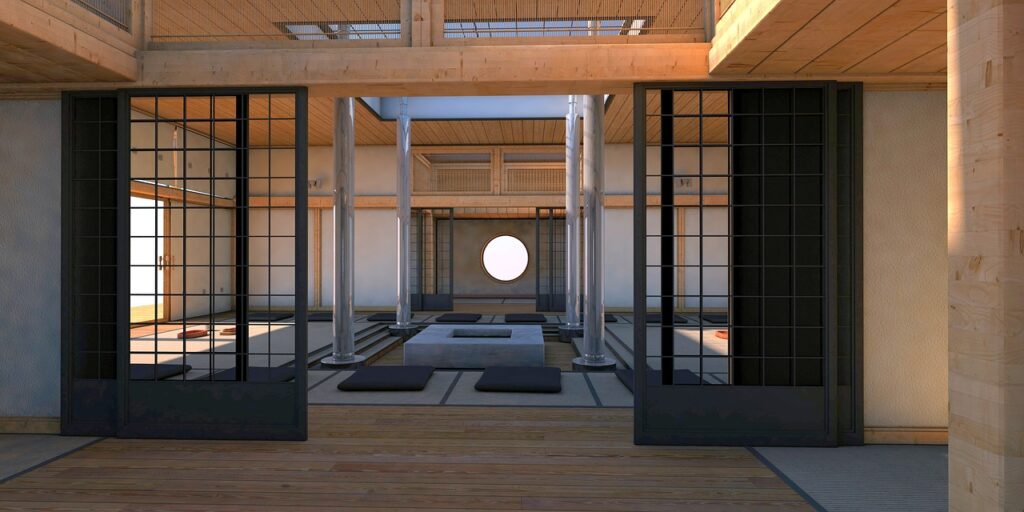
Shoji screens are traditional Japanese sliding screens made of wooden frames and translucent paper. These screens are used as room dividers and allow gentle, diffused light to enter. They serve not only a functional purpose but also contribute to the serene ambiance that Japanese decor strives to create.
Tatami Mats
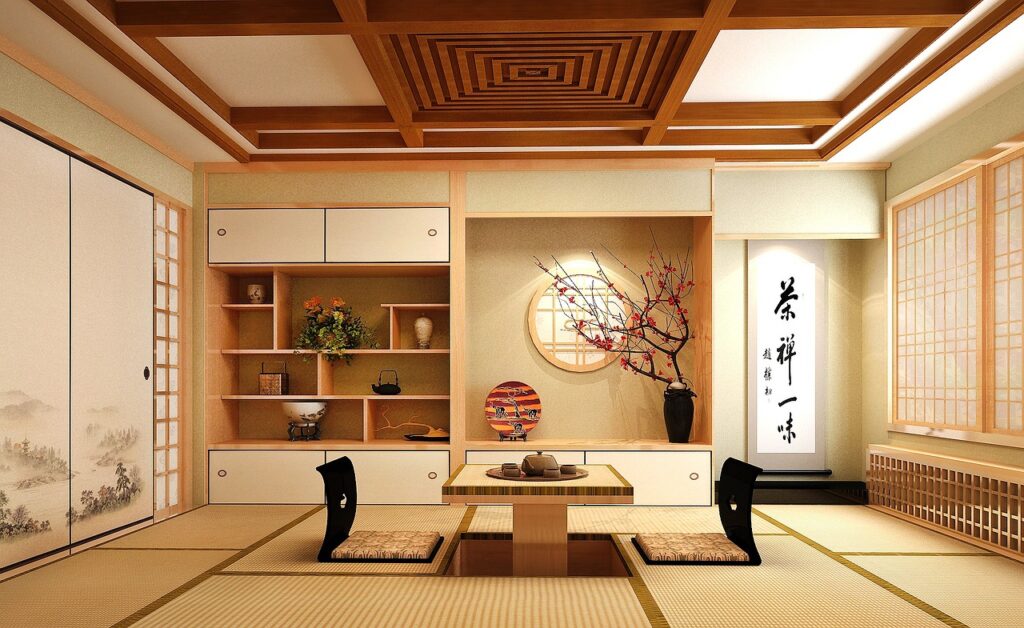
Tatami mats are the traditional Japanese flooring of choice. Made from rice straw and rush grass, they provide a soft, natural surface for living spaces. Tatami mats are often used to define areas and enhance the overall Japanese aesthetic.
Sliding Doors (Fusuma)
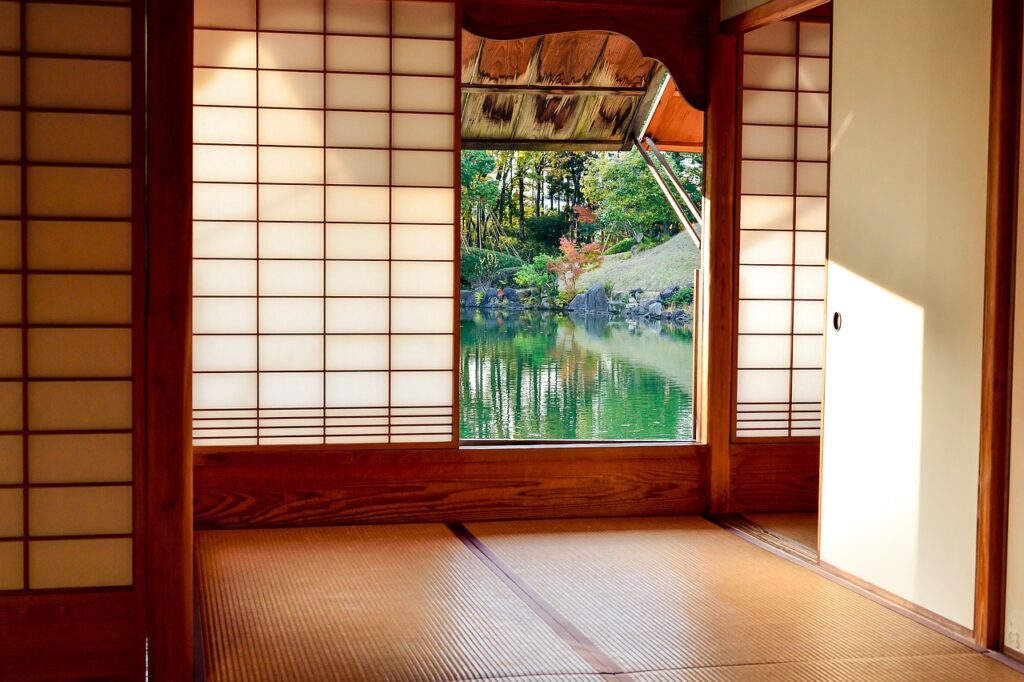
Fusuma, or sliding doors, are a prominent feature in Japanese decor. These doors can be plain or adorned with intricate artwork and are used to partition spaces within a room. They add an element of elegance while maintaining functionality.
Zen Influence

Zen Buddhism has a significant influence on Japanese decor. This influence promotes mindfulness and simplicity in design. Elements such as Zen gardens, rock gardens, and bonsai trees are often incorporated into Japanese interior design, further enhancing the sense of tranquility.
Ikebana and Bonsai
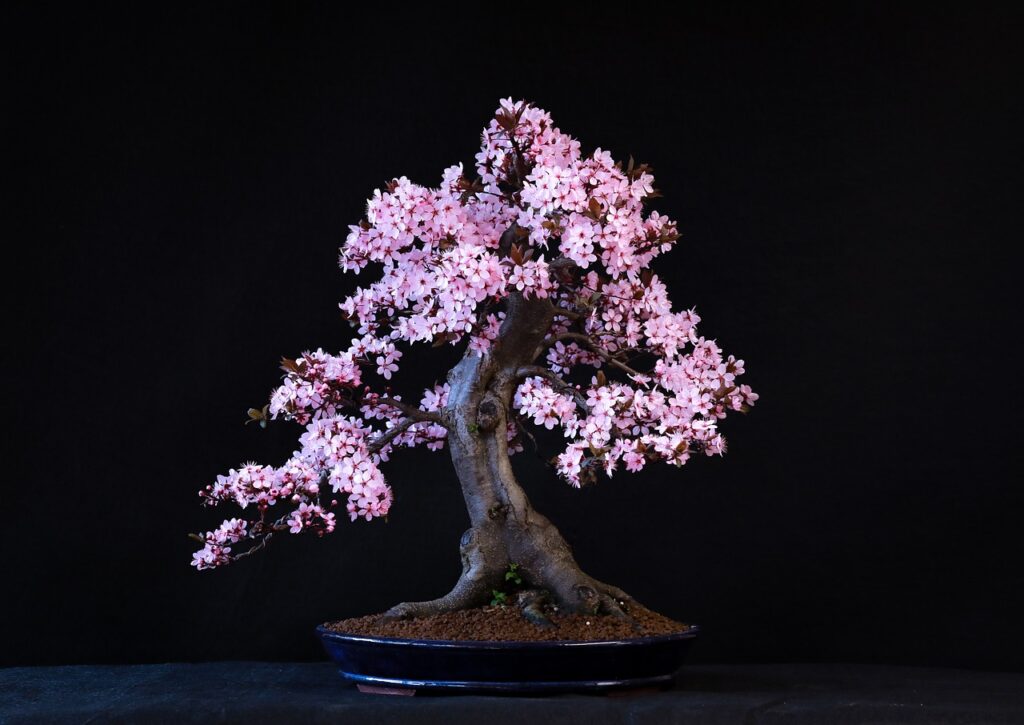
The art of flower arranging, known as Ikebana, and the cultivation of miniature trees called Bonsai are essential components of Japanese decor. These elements bring the beauty of nature indoors, adding to the sense of balance and serenity in the space.
Low Furniture

Japanese decor often features low, modular furniture like tatami seating, low tables (kotatsu), and floor cushions. This design encourages people to sit close to the ground, promoting a sense of intimacy and a connection to the Earth.
Kakejiku (Hanging Scrolls)
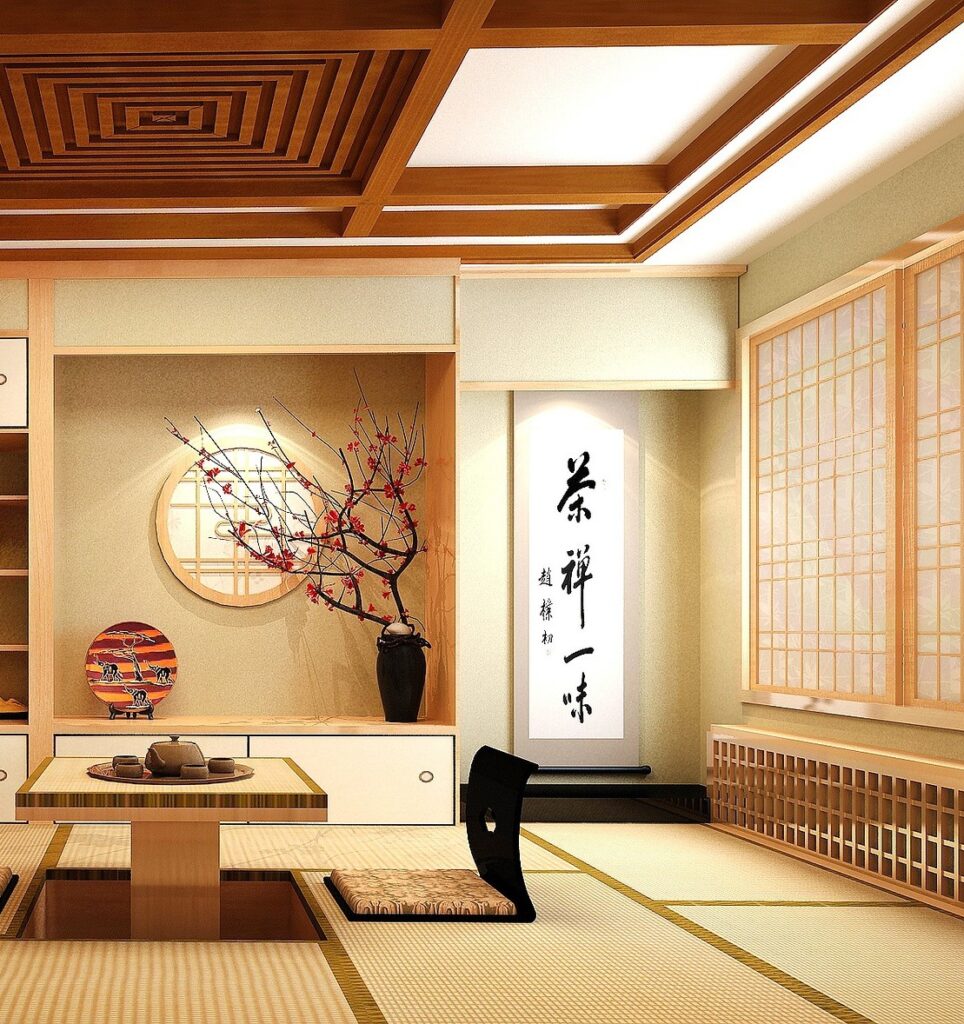
Hanging scrolls with calligraphy or traditional paintings are often used as wall decor in Japanese interiors. These scrolls add an element of elegance and provide a focal point in the room.
Japanese decor embodies the principles of harmony, balance, and the appreciation of imperfections (wabi-sabi). It creates an environment that fosters relaxation, contemplation, and a profound connection to nature and the present moment. Whether in homes, restaurants, or hotels, Japanese decor stands out for its timeless elegance and its ability to transport individuals to a world of serenity and simplicity.



